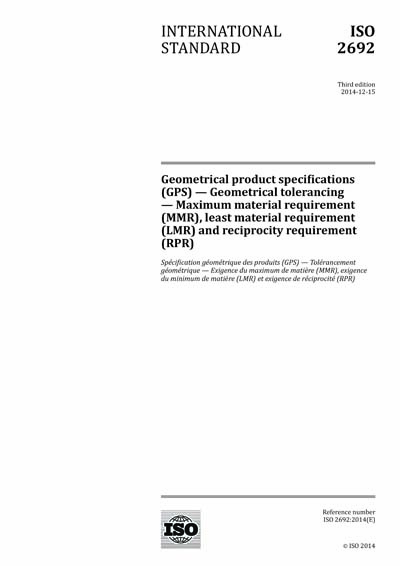Historical
ISO 2692:2014
Geometrical product specifications (GPS) - Geometrical tolerancing - Maximum material requirement (MMR), least material requirement (LMR) and reciprocity requirement (RPR)
ISO 2692:2014 defines the maximum material requirement, the least material requirement and the reciprocity requirement. These requirements can only be applied to features of size.
These requirements are used to control specific functions of workpieces where size and geometry are interdependent, e.g. to fulfil the functions "assembly of parts" (for maximum material requirement) or "minimum wall thickness" (for least material requirement). However, the maximum material requirement and least material requirement are also used to fulfil other functional design requirements.
Considering this interdependence between size and geometry, the principle of independency defined in ISO 8015 does not apply when the maximum material requirement, least material requirement, or reciprocity requirement, are used.
Content Provider
International Organization for Standardization [iso]






